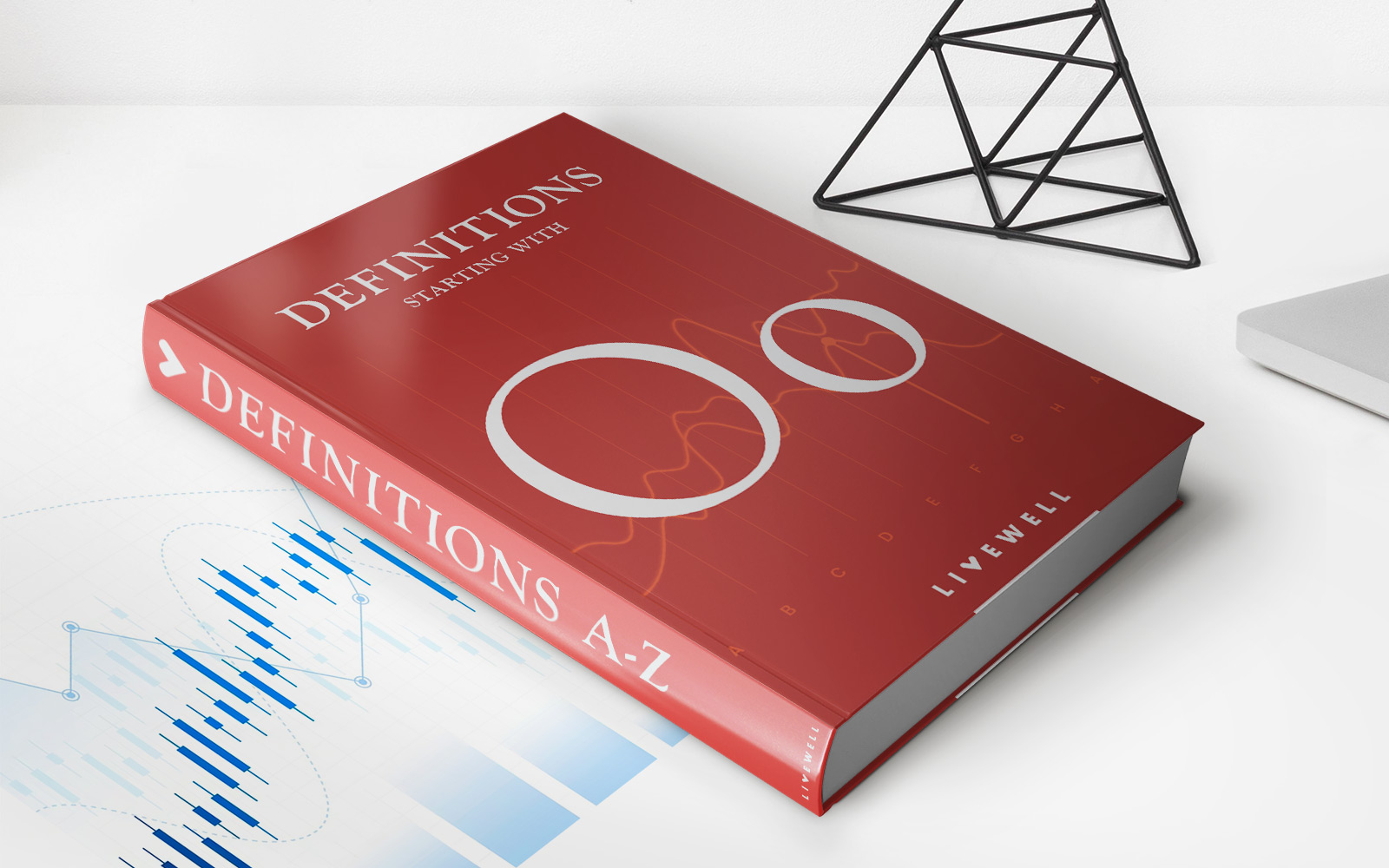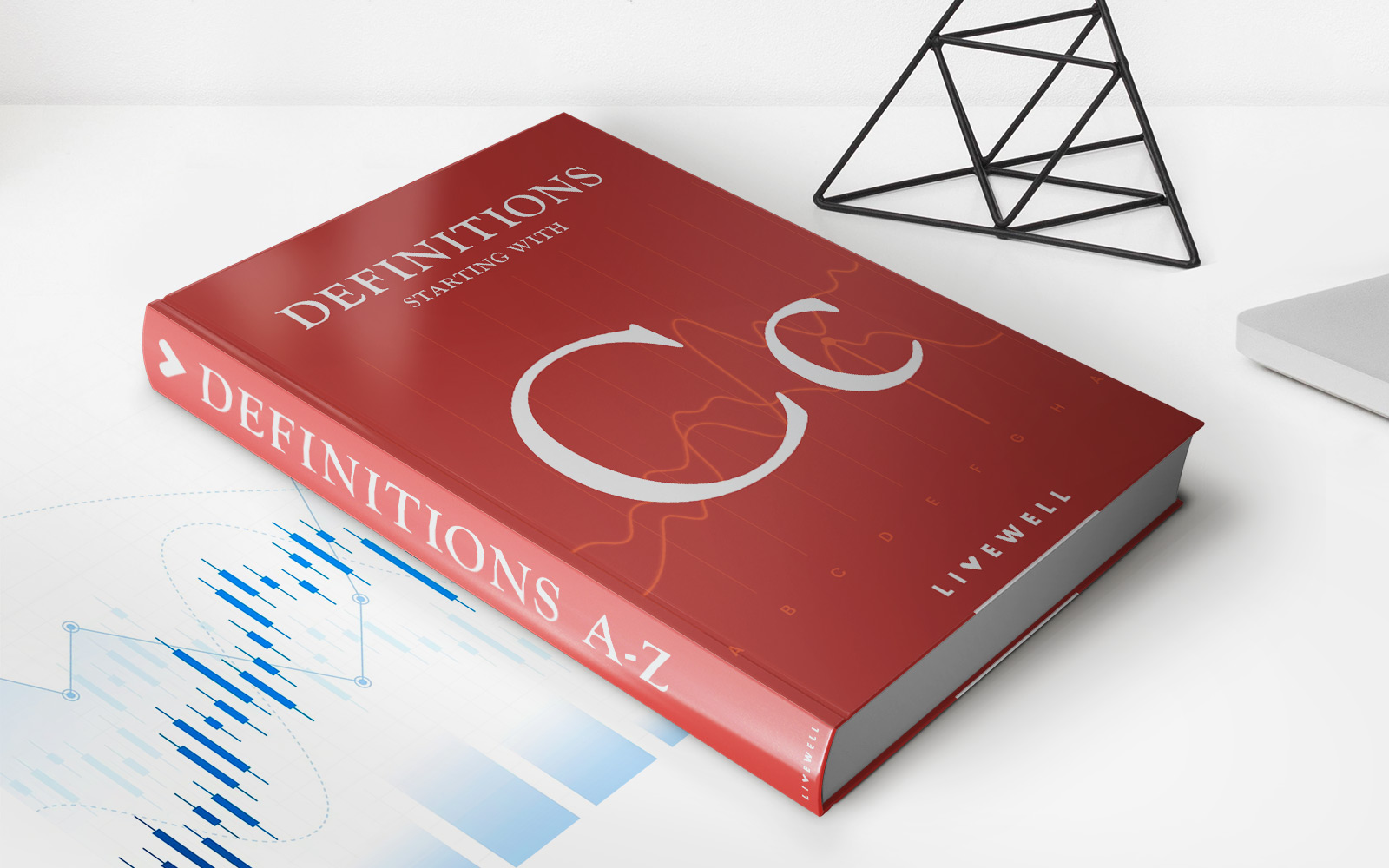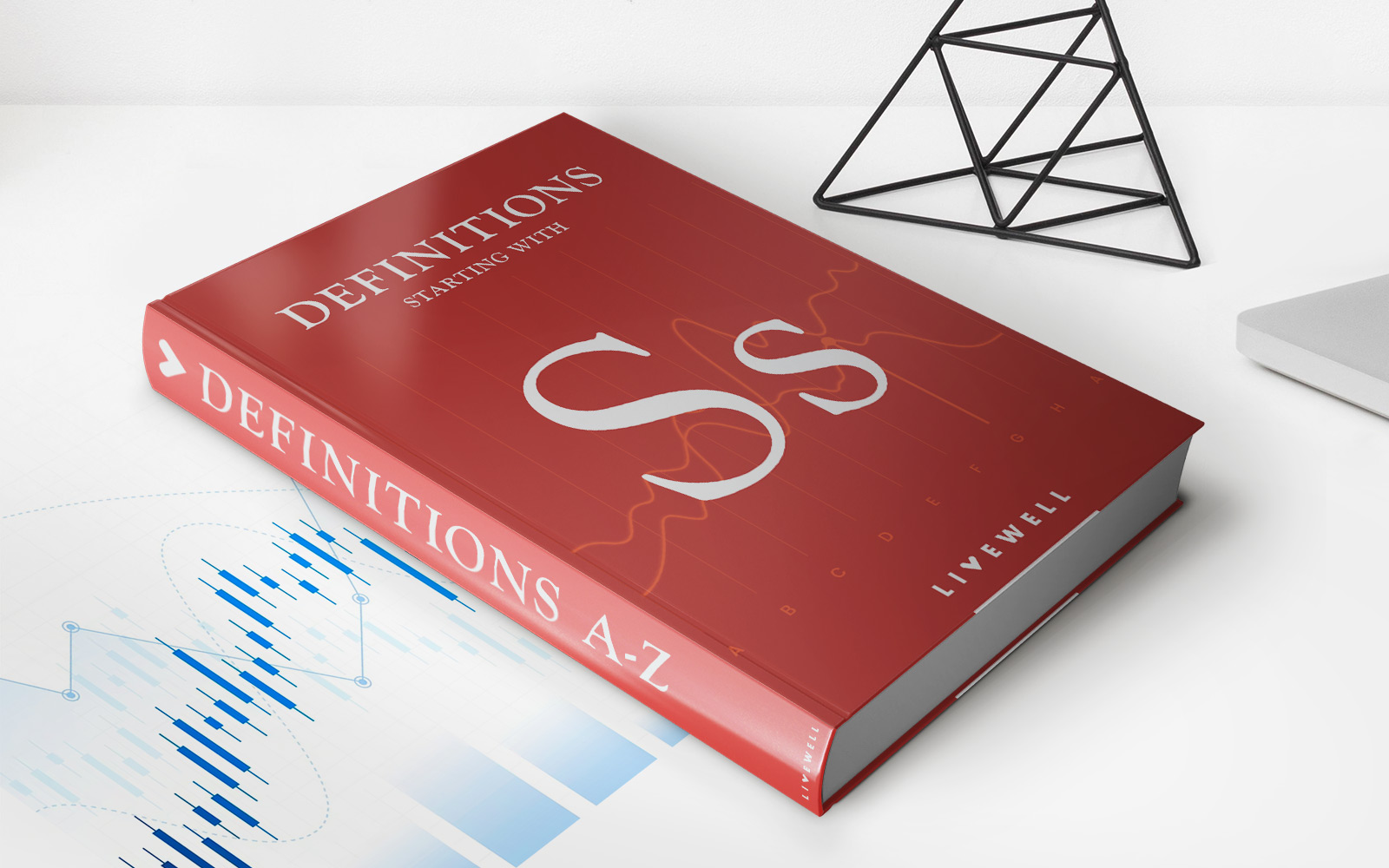

Finance
Why Buy Options Instead Of Stocks
Published: January 19, 2024
Looking to dive into the world of finance? Discover the benefits of buying options instead of stocks and gain a deeper understanding of the financial market.
(Many of the links in this article redirect to a specific reviewed product. Your purchase of these products through affiliate links helps to generate commission for LiveWell, at no extra cost. Learn more)
Table of Contents
- Introduction
- What Are Options?
- Advantages of Buying Options
- Lower Capital Requirement
- Limited Risk
- Leverage
- Flexibility
- Hedging Opportunities
- Potential for Higher Returns
- Disadvantages of Buying Options
- Expiration Date
- Time Decay
- Volatility
- Understanding Option Pricing
- Factors Affecting Option Prices
- Evaluating the Right Option
- Conclusion
Introduction
Investing in the financial markets offers a myriad of opportunities for individuals to grow their wealth over time. Stocks have long been the go-to investment choice for many, but there is another avenue that is gaining popularity: options. Options provide investors with additional flexibility and strategies to potentially enhance their returns. In this article, we will explore the advantages of buying options instead of stocks and help you understand why they could be a valuable addition to your investment portfolio.
Options are derivative instruments that give holders the right, but not the obligation, to buy or sell an underlying asset at a specified price within a particular time frame. They provide a unique way to participate in market movements without the need to own the underlying asset outright. This can be particularly advantageous for investors who want exposure to a stock’s price movement but may not have the capital to purchase the shares outright.
One significant advantage of buying options is the lower capital requirement compared to buying stocks. With options, you only need to pay a fraction of the cost of the underlying asset, known as the premium. This allows investors to control a larger position in the market for a relatively smaller upfront investment. For example, instead of buying 100 shares of a stock, you can purchase a call option that controls those 100 shares at a fraction of the cost.
Another key benefit is the limited risk associated with buying options. When you buy an option, the most you can lose is the premium paid. This provides a level of protection and peace of mind, as you know exactly how much you are risking in the trade. In contrast, when you buy stocks, your potential losses are unlimited if the stock price were to plummet.
Leverage is yet another advantage of buying options. Options allow you to control a larger position in the market relative to the initial investment. This means that even a small price movement in the underlying asset can result in significant gains for the option holder. However, it is important to remember that leverage can also amplify losses, so it’s essential to carefully manage your risk.
In addition to leverage, options offer flexibility in terms of investment strategies. There are various types of options such as calls and puts, as well as different expiration dates and strike prices to choose from. This flexibility allows investors to tailor their options positions to their specific market outlook and risk tolerance.
Options also provide hedging opportunities, allowing investors to protect their existing positions against potential downside risk. By buying put options, for example, investors can effectively insure their stock holdings against significant losses in the event of a market downturn.
Finally, buying options presents the potential for higher returns. Due to the leverage and flexibility mentioned earlier, options can generate substantial profits if your market predictions turn out to be correct. This potential for higher returns is one of the primary reasons why investors are drawn to options as an investment vehicle.
While there are definite advantages to buying options, it is crucial to understand the associated disadvantages. These include expiration dates, time decay, and volatility, which we will explore in detail later in this article. Nevertheless, with proper education and diligent analysis, options can be a valuable tool for investors seeking to diversify their portfolio and potentially enhance their investment returns.
What Are Options?
Options are financial instruments that give investors the right, but not the obligation, to buy or sell an underlying asset at a predetermined price within a specified time frame. They derive their value from the underlying asset, which can be stocks, indices, commodities, or even currencies. Options trading involves two parties: the option buyer, also known as the holder, and the option writer, or seller.
There are two types of options: call options and put options. A call option gives the holder the right to buy the underlying asset at the agreed-upon price, known as the strike price, while a put option gives the holder the right to sell the underlying asset at the strike price.
Options have expiration dates, which indicate the duration of time during which the holder can exercise their rights. The expiration dates can range from days to months, depending on the contract. Once the options contract reaches its expiration date, it becomes null and void, and the holder no longer has the right to buy or sell the underlying asset.
When purchasing an option, the buyer pays a premium to the seller for the rights bestowed by the contract. The premium is determined by several factors, including the current price of the underlying asset, the strike price, the time left until expiration, and the expected volatility of the asset’s price.
Options can be used for various purposes within investment strategies. Some investors use options as a way to speculate on the direction of the underlying asset’s price. For example, if an investor believes that a stock will increase in value, they can buy a call option to potentially profit from the price appreciation. On the other hand, if they anticipate a decline in the stock price, they can purchase a put option to benefit from the downward movement.
Additionally, options can serve as a hedging tool. Investors may use options to protect their existing positions from potential losses. For example, if an investor owns a stock and wants to safeguard against a possible market downturn, they can buy put options on that stock to offset any potential losses. This strategy helps mitigate risk and serves as an insurance policy for their investments.
It is important to note that options trading can be complex and involves inherent risks. The value of options can fluctuate based on various factors, such as changes in the underlying asset’s price, market volatility, and time decay. Therefore, it is essential for investors to thoroughly understand how options work and the associated risks before engaging in options trading.
Advantages of Buying Options
Buying options can offer several advantages for investors looking to diversify their portfolio and potentially enhance their returns. Let’s explore some of the key advantages of buying options:
Lower Capital Requirement
One major advantage of buying options is the lower capital requirement compared to buying stocks. When buying stocks, you typically have to pay the full price of the shares. In contrast, when buying options, you only need to pay the premium, which is a fraction of the cost of the underlying asset. This lower capital requirement allows you to control a larger position in the market for a relatively smaller upfront investment.
Limited Risk
Another significant advantage of buying options is the limited risk associated with them. When you buy an option, the most you can lose is the premium paid. This provides a level of protection and peace of mind, as you know exactly how much you are risking in the trade. In contrast, when you buy stocks, your potential losses are unlimited if the stock price were to plummet.
Leverage
Options provide leverage, which means that you can control a larger position in the market relative to the initial investment. This leverage allows you to amplify your returns. Even a small price movement in the underlying asset can result in significant gains for the option holder. However, it is important to remember that leverage can also amplify losses, so it is crucial to carefully manage your risk.
Flexibility
Options offer flexibility in terms of investment strategies. There are various types of options such as calls and puts, as well as different expiration dates and strike prices to choose from. This flexibility allows you to tailor your options positions to your specific market outlook and risk tolerance. You can use options to speculate on the direction of the underlying asset’s price or as a hedging strategy to protect your existing positions against potential losses.
Hedging Opportunities
Options provide hedging opportunities, allowing you to protect your existing positions against potential downside risk. By buying put options, for example, you can effectively insure your stock holdings against significant losses in the event of a market downturn. Hedging with options can help mitigate risk and provide a level of stability to your portfolio.
Potential for Higher Returns
Buying options presents the potential for higher returns. Due to the leverage and flexibility mentioned earlier, options can generate substantial profits if your market predictions turn out to be correct. This potential for higher returns is one of the primary reasons why investors are drawn to options as an investment vehicle. However, it is important to note that options trading involves risks, and not all trades will result in profitable outcomes.
Overall, buying options can be a valuable addition to your investment portfolio, offering lower capital requirements, limited risk, leverage, flexibility, hedging opportunities, and the potential for higher returns. However, it is essential to thoroughly understand how options work and the associated risks before engaging in options trading. Consider consulting with a financial advisor or doing extensive research to ensure you make informed investment decisions.
Lower Capital Requirement
One of the significant advantages of buying options is the lower capital requirement compared to buying stocks. When you buy stocks, you typically have to pay the full price of the shares upfront. However, with options, you only need to pay a fraction of the cost known as the premium.
The premium is considerably less than the price of the underlying asset, making options an attractive choice for investors with limited capital. This lower capital requirement allows you to control a larger position in the market for a relatively smaller upfront investment.
For example, let’s say you’re interested in purchasing 100 shares of a particular stock. If the stock price is $100 per share, you would need to invest $10,000 to acquire those shares. However, instead of buying the shares outright, you can purchase options contracts that give you the right to buy those 100 shares at a specified price in the future.
Assuming the options contract has a premium of $5 per share, you would only need to pay $500 for the 100 options contracts (100 shares x $5 premium per share). As a result, your upfront investment is significantly reduced compared to buying the actual shares.
This lower capital requirement opens up opportunities for investors who may not have the funds to buy a substantial number of shares outright. It allows individuals with limited capital to participate in the market and potentially benefit from price movements in the underlying asset without making a significant financial commitment.
Another advantage of the lower capital requirement is the ability to diversify your investment portfolio more easily. With options, you can allocate your capital across a range of different options contracts rather than being limited to investing in a few individual stocks. This diversification can help mitigate risk and increase the potential for returns by spreading your investments across different sectors, industries, or asset classes.
It is important to note that while options offer a lower capital requirement, the potential for profits and losses is still significant. The premium you pay for the options contracts represents the maximum amount you can lose if the market moves against you. As with any investment, it is crucial to conduct thorough research, carefully consider your risk tolerance, and employ appropriate risk management strategies.
In summary, the lower capital requirement of buying options makes them an attractive option for investors with limited funds. It allows individuals to control a larger position in the market for a smaller upfront investment, providing access to potential market gains that may otherwise be out of reach. However, it is essential to remember that options trading involves risks, and careful analysis and risk management should be employed to make informed investment decisions.
Limited Risk
When it comes to investment, risk management is a crucial aspect that often weighs heavily on investors’ minds. One significant advantage of buying options is the limited risk associated with them. When you buy an option, the most you can lose is the premium paid.
This level of limited risk provides investors with a level of protection and peace of mind. With stocks or other investments, your potential losses are unlimited if the price of the asset were to sharply decline. However, with options, your risk is predefined, allowing you to have better control over your investment outcomes.
Let’s consider an example to understand how limited risk works in options trading. Imagine you buy a call option for $3 per share, with a strike price of $50, and the option expiration date is one month away. The maximum you can lose is the $3 premium you paid for each share of the option contract. Even if the underlying asset’s price falls below the strike price or is significantly lower than your initial purchase price, your loss is limited to the premium paid.
Having limited risk with options can be particularly advantageous in volatile markets or uncertain economic times. Investors can take advantage of potential market opportunities without worrying about the unlimited downside risk that is associated with buying stocks outright. It allows you to participate in the market’s upside potential while having a clear understanding of the maximum amount you can lose.
Another benefit of limited risk with options is the ability to plan and manage your investments more effectively. By knowing your potential losses upfront, you can align your risk tolerance and investment goals accordingly. This level of clarity allows for more informed decision-making and helps you stay disciplined in your investment strategy.
It’s important to note that while the risk is limited when buying options, it doesn’t mean options trading is risk-free. Options still involve volatility and market uncertainty, which can influence the value of the options contract. Additionally, the premium you pay for the option is at risk if the market conditions do not move in your favor.
To mitigate risk and enhance your options trading experience, it is advisable to conduct thorough research, develop a well-defined strategy, and employ risk management techniques such as setting stop-loss orders or using position-sizing techniques. These measures can help you protect your investments and ensure that your risk exposure remains within your predetermined limits.
In summary, one of the advantages of buying options is the limited risk involved. By understanding the maximum potential loss upfront, investors gain peace of mind and can make more informed decisions about their investments. However, it is crucial to conduct proper research and implement risk management strategies to navigate options trading effectively.
Leverage
Leverage is a fundamental concept in finance, and it plays a significant role in options trading. One of the advantages of buying options is the ability to control a larger position in the market relative to your initial investment, thanks to the leverage that options provide.
When you buy an options contract, you are essentially gaining exposure to the price movement of the underlying asset without owning it outright. This allows you to control a larger position in the market with a smaller upfront investment compared to buying the actual shares of the asset.
Let’s illustrate the concept of leverage with an example. Suppose you believe that the price of a particular stock, which is currently trading at $100 per share, will increase in the near future. Instead of buying 100 shares of the stock, which would cost you $10,000, you can purchase call options that control those 100 shares at a fraction of the cost.
Assume that the premium for the call options is $2 per share. By purchasing 10 call options, you can control 1,000 shares of the underlying stock (10 options contracts x 100 shares per contract). Even if the stock price increases by just $5, you can potentially make a profit of $5,000 (1,000 shares x $5 increase) minus the premium paid.
This ability to control a larger position with a smaller investment is what gives options their leverage. The leverage effect can amplify the returns of an options trade. A relatively small percentage move in the underlying asset’s price can result in a significant percentage gain in the options contract.
It’s important to note that while leverage can amplify your potential profits, it can also magnify your losses. Options trading carries inherent risks, and if the market moves against your position, you can lose your entire investment, which is limited to the premium paid.
Understanding and managing the risks associated with leverage is essential when buying options. It’s crucial to have a clear risk management strategy in place, which may include setting stop-loss orders, diversifying your options positions, and determining an appropriate position size based on your risk tolerance.
Moreover, leveraging options also requires careful analysis and timing. Options contracts have expiration dates, and if the market doesn’t move as anticipated within the specified timeframe, the value of the options contract may decrease or even become worthless.
While leverage can potentially enhance profits, it is crucial to remember that options trading involves risks. It is advisable to educate yourself, conduct thorough research, and consider seeking guidance from a financial advisor or a professional with expertise in options trading before venturing into this type of investment.
In summary, one of the key advantages of buying options is the leverage they offer. It allows you to control a larger position in the market with a smaller upfront investment. However, leverage comes with increased risk, and it’s important to exercise caution, implement proper risk management strategies, and make well-informed decisions when trading options.
Flexibility
Flexibility is a significant advantage when it comes to buying options. Unlike stocks, which have a straightforward buy-and-hold strategy, options offer a range of choices and strategies to suit different market conditions and investment objectives.
Options provide investors with the flexibility to tailor their positions based on their specific market outlook and risk tolerance. Here are some ways in which options offer flexibility:
Types of Options
Options come in two main types: call options and put options. Call options give the holder the right to buy the underlying asset at a specified price (strike price) within a given time frame. Put options, on the other hand, give the holder the right to sell the underlying asset at the strike price within the specified time frame. The ability to choose between call and put options allows investors to adopt different strategies based on their market expectations.
Expiration Dates
Options have expiration dates, indicating the time frame during which the holder can exercise their rights. Different options contracts have various expiration dates, ranging from days to months. This flexibility allows investors to select options with the desired expiration that aligns with their investment objectives and time horizon.
Strike Prices
Options contracts also have strike prices, which determine the specific price at which the underlying asset can be bought or sold. The availability of different strike prices allows investors to choose options that are either in-the-money, at-the-money, or out-of-the-money. This flexibility enables investors to customize their positions based on their desired risk-reward profile and market expectations.
Investment Strategies
Options provide a wide range of investment strategies to suit different market conditions and objectives. Whether you are looking to speculate on the price movement of an underlying asset or protect your existing portfolio against potential losses, options offer various strategies such as long calls, long puts, covered calls, and protective puts. These strategies can be employed individually or in combination to create more complex investment positions.
The flexibility offered by options allows investors to adapt their positions as market conditions change. You can adjust your options strategies by rolling options forward, closing out positions early, or even combining different options contracts to create more advanced strategies such as spreads or straddles.
It is important to note that while options offer flexibility, they also require a deep understanding of the underlying asset, market conditions, and the risks associated with various strategies. Proper education, research, and analysis are crucial to effectively utilizing the flexibility of options and maximizing their benefits.
By taking advantage of the flexibility options provide, investors can diversify their investment approach, manage risk, and potentially enhance their returns. However, it’s important to carefully consider your investment goals, risk tolerance, and stay informed about market dynamics to make informed decisions when employing options strategies.
In summary, one of the advantages of buying options is the flexibility they offer. Investors can choose from various types of options, expiration dates, and strike prices, enabling them to align their positions with their market outlook and risk profile. Additionally, options provide a wide array of investment strategies to suit different objectives, allowing investors to adapt their positions as market conditions change.
Hedging Opportunities
One of the key advantages of buying options is the ability to use them as a hedging tool. Hedging is a risk management strategy that involves taking positions to mitigate potential losses in existing investments. Options provide investors with unique opportunities to hedge their portfolios against market downturns and minimize potential downside risks.
When you buy put options, you gain the right to sell the underlying asset at a specific price (strike price) within a specified timeframe. This allows you to protect the value of your existing assets in the event of a market decline.
Here are a few ways options can be used for hedging:
Protecting Stock Holdings
If you own stocks and are concerned about potential market downturns, buying put options can help protect the value of your stock holdings. By purchasing put options, you have the right to sell the shares at the strike price even if the market price drops below that level. This enables you to limit potential losses by setting a floor price for your shares.
Portfolio Protection
Options can also be used to hedge a diversified investment portfolio. By buying put options on indices or exchange-traded funds (ETFs) that mimic the performance of the overall market, you can protect your portfolio from the impact of a broad-based market decline. This allows you to reduce the potential impact of negative market movements on your overall investment holdings.
Commodity Price Hedging
For businesses involved in the production or consumption of commodities, options can be used to hedge against price volatility. For example, a company engaged in the manufacturing of goods reliant on a specific commodity can buy put options on that commodity to protect against potential price increases. This allows the company to lock in a purchase price, ensuring stability in their production costs.
Currency Risk Management
Options can also be used to hedge against currency risk when investing or operating in international markets. For instance, if a company expects their home currency to weaken against a foreign currency, they can buy call options on that currency to protect against potential exchange rate losses. This helps mitigate the impact of fluctuations in currency exchange rates on their international business operations.
The ability to hedge with options provides investors and businesses with a level of security and stability in uncertain market conditions. By using options strategically, investors can insulate their portfolios against potential losses, reduce volatility, and maintain a more balanced risk profile.
It’s important to note that while hedging with options can offer protection against downside risk, it involves cost considerations. Buying options requires paying a premium, and if the market moves favorably, the options premium may be lost. Therefore, it’s essential to carefully assess the cost-benefit of hedging strategies and determine the appropriate level of hedging based on individual risk tolerance and investment objectives.
In summary, options provide excellent hedging opportunities for investors who want to protect their existing investments against potential downside risks. Through the use of put options, investors can establish a level of security by setting a floor price for their holdings, thus limiting potential losses in the event of market declines. Whether it is protecting stock holdings, hedging portfolios, managing commodity price risk, or mitigating currency fluctuations, options offer versatile hedging strategies to suit various investment scenarios.
Potential for Higher Returns
One of the primary reasons why investors are drawn to buying options is the potential for higher returns. Options offer an opportunity to generate significant profits if your market predictions turn out to be correct.
The potential for higher returns in options trading can be attributed to a few key factors:
Leverage
Options provide leverage, allowing investors to control a larger position in the market relative to their initial investment. Even a small price movement in the underlying asset can result in substantial gains for the option holder. The ability to magnify profits through leverage is a significant factor in the potential for higher returns.
Flexibility in Market Direction
Options provide flexibility to profit in both rising and falling markets. When buying call options, investors can capitalize on upward price movements in the underlying asset. Conversely, buying put options allows investors to profit from downward price movements. This flexibility enables investors to take advantage of various market conditions and potentially earn higher returns regardless of the market direction.
Timing and Market Volatility
Options can be particularly beneficial during periods of heightened market volatility. When markets are volatile, prices can experience significant fluctuations, creating opportunities for substantial profits. Options allow investors to capitalize on these price swings and potentially earn higher returns by correctly predicting the timing and magnitude of market movements.
Strategic Trading Approaches
Options offer various trading strategies that can be employed to enhance returns. Traders can use strategies such as long calls, long puts, spreads, or straddles to take advantage of specific market conditions or volatility levels. These strategies involve more complex combinations of buying and selling options contracts, allowing for potential higher returns based on the specific strategy and market outlook.
It’s important to note that while options offer the potential for higher returns, they also carry inherent risks. Options trading involves factors such as time decay, volatility, and the risk of losing the premium paid for the options contracts. It is essential for investors to carefully analyze market conditions, conduct thorough research, and develop a well-defined trading plan to increase their chances of earning higher returns.
Furthermore, successful options trading requires a deep understanding of the market, technical analysis, and risk management techniques. It is recommended to continually educate yourself, stay updated with market trends, and consider consulting with a financial advisor or an options trading expert to navigate the options market effectively.
In summary, buying options presents the potential for higher returns due to leverage, flexibility in market direction, timing and market volatility, and the availability of various strategic trading approaches. However, it is crucial to recognize and manage the risks associated with options trading and equip yourself with the knowledge and skills necessary to make informed investment decisions.
Disadvantages of Buying Options
While there are numerous advantages to buying options, it is important to understand and consider the potential disadvantages that come with this investment strategy. Here are some key drawbacks to be aware of:
Expiration Date
Options have expiration dates, and once the options contract reaches its expiration, it becomes worthless. Unlike stocks that can be held indefinitely, options have a limited lifespan, which means you must accurately predict the timing of price movements to profit from your options positions. If the market does not move as anticipated within the specified timeframe, the options contract may expire without any value, resulting in a loss of the premium paid.
Time Decay
Options contracts also suffer from time decay. As the expiration date approaches, the value of the options contract may decrease, even if the underlying asset’s price remains unchanged. This is known as “theta decay.” Time decay erodes the value of options over time, which means that holding options for too long without the anticipated price movement can lead to a loss of value.
Volatility
While volatility can present opportunities for higher returns, it can also increase the cost of options premiums. Higher volatility often leads to higher options prices, making it more expensive to buy options contracts. This can reduce potential profits or require larger price movements in the underlying asset to overcome the cost of the options premium.
Understanding Option Pricing
The pricing of options contracts can be complex and difficult to understand for inexperienced investors. It involves factors such as the underlying asset’s price, strike price, time to expiration, implied volatility, and interest rates. Failure to fully comprehend option pricing dynamics can impact investment decisions and lead to undesirable outcomes.
Limited Duration of Price Movements
Options contracts benefit from price movements in the underlying asset, but they are time-limited. Even if the underlying asset eventually moves in your favor, if it happens after the options contract expires, you will not benefit from that price movement. The limited duration of options contracts requires precise timing and accurate predictions of price movements to realize profits.
Risk of Total Loss
When buying options, there is a risk of losing the entire premium paid for the options contracts. If the market conditions do not move in your favor or the anticipated price movements do not materialize, the options premium can be lost entirely. It is crucial to carefully assess the risk-reward profile of the options contracts and ensure the potential profits justify the potential loss.
Understanding the disadvantages of buying options is essential to make informed investment decisions. It is important to thoroughly research, educate yourself, and consider seeking advice from professionals or financial advisors with expertise in options trading. By balancing the advantages and disadvantages, you can navigate the options market more effectively and align your investment strategy with your risk tolerance and investment goals.
Expiration Date
One of the key disadvantages of buying options is the presence of an expiration date. Options contracts have a specific period of validity, after which they become null and void. This expiration date introduces a time constraint that investors need to consider when trading options.
When you buy options, you have the right to buy (call option) or sell (put option) the underlying asset at the strike price within a specified timeframe. Once the expiration date is reached, the options contract ceases to exist, and the rights associated with it expire as well.
The expiration date can vary depending on the options contract and is typically indicated in terms of weeks, months, or even years. The choice of expiration date for an options contract depends on an investor’s trading strategy, market expectations, and risk tolerance.
The presence of an expiration date adds complexity to options trading. It requires investors to accurately predict the timing of price movements in the underlying asset. If the market does not move in the anticipated direction within the specified timeframe, the options contract may expire without any value, resulting in a loss of the premium paid.
Managing the expiration date is crucial when buying options. Investors need to be mindful of the time remaining until expiration and the probability of the underlying asset’s price hitting the strike price within that timeframe. The longer the period until expiration, the more time investors have for their predictions to materialize. However, longer expiration dates may come at a higher premium cost.
Expiration dates can also impact options trading strategies. Short-term traders may prefer options contracts with nearer expiration dates, as they allow for relatively quick profit opportunities. Long-term investors, on the other hand, may opt for options contracts with longer expiration dates to capitalize on extended market trends.
It’s important to note that options can be traded and closed out before the expiration date if the desired profit or market conditions are met. Investors are not obligated to hold options contracts until expiration and can exit their positions at any time. However, early closure may result in potential profit or loss realization before the anticipated price movement occurs.
Understanding the nuances of the expiration date is crucial for options traders. Careful consideration of the time remaining until expiration, the anticipated price movement, and the investor’s trading strategy is essential to maximize the potential profitability of options trading. Thorough research, technical analysis, and risk management techniques are valuable tools for making well-informed decisions regarding options expiration.
In summary, the expiration date is a significant factor to consider when buying options. The time constraint adds complexity to options trading, requiring investors to accurately predict the timing of price movements in the underlying asset. Proper management and understanding of the expiration date are essential for successful options trading strategies.
Time Decay
Time decay, also known as theta decay, is an important concept to understand when buying options. It refers to the reduction in the value of options contracts as time passes, regardless of the underlying asset’s price movement. Time decay is a crucial factor that can affect the profitability of options trades.
Options have a limited lifespan, with a predetermined expiration date. As the expiration date approaches, the time value of the options contract diminishes, causing the options’ value to decrease. The rate of time decay accelerates as the expiration date gets closer.
The impact of time decay can be significant and is most pronounced in the final weeks or days before the options’ expiration. This is why shorter-dated options contracts tend to have more rapid time decay compared to longer-dated contracts.
When buying options, it is important to be aware of time decay and how it can affect your investment. If the price of the underlying asset remains stagnant or moves in an unfavorable direction, the value of the options contract can erode over time, leading to a loss in the premium paid.
Time decay is influenced by various factors, including the time remaining until expiration, the level of market volatility, and the interest rate environment. Higher levels of volatility tend to increase time decay, while low levels of volatility may mitigate its impact.
To mitigate the effects of time decay, it is crucial to have a clear understanding of your trading strategy and timeframe. Short-term options traders may focus on capturing quick price movements and may not be as affected by time decay. Long-term investors, on the other hand, may choose options contracts with longer expiration dates to allow for a greater period of time for their market predictions to materialize.
Given the impact of time decay, it is advisable to closely monitor options positions and their remaining time until expiration. Long-term options holders may need to be patient and weather short-term fluctuations, while short-term traders may need to act swiftly to take profits or cut losses before significant time decay occurs.
It’s important to note that time decay can potentially be to your advantage when selling options contracts. As an options seller, the decrease in the value of the options’ time premium works in your favor, potentially resulting in profits as long as the market conditions remain favorable.
To effectively manage time decay, investors may consider employing options trading strategies that incorporate shorter expiration dates or using options spreads that involve both buying and selling options to minimize the impact of time decay.
In summary, time decay is a critical factor to consider when buying options. It refers to the reduction in the value of options contracts as time progresses towards the expiration date. Traders should be aware of time decay and its potential impact on options’ profitability. Careful consideration of the expiration date, trading strategy, and risk management techniques is essential to navigate the effects of time decay and maximize the potential returns in options trading.
Volatility
Volatility is a crucial factor to consider when buying options. It refers to the degree of price fluctuations or uncertainty in the underlying asset. Options are highly sensitive to volatility, and understanding its impact is essential in evaluating and managing options positions.
Volatility has a significant influence on options prices. Generally, higher levels of volatility lead to higher options premiums, while lower volatility results in lower premiums. This is because an increase in volatility implies a greater likelihood of large price swings in the underlying asset, making options more valuable in a volatile market.
Volatility can affect options in two main ways:
Premium Costs
When volatility is high, options premiums tend to be more expensive. This means that buying options during periods of elevated volatility requires a higher upfront cost. This increased premium can reduce potential profits or require more significant price movements in the underlying asset to overcome the cost of the options premium.
Impact on Option Strategies
Volatility can also influence the success of specific options trading strategies. For example, in strategies that involve selling options, such as covered calls or credit spreads, high volatility can lead to higher premiums received. On the other hand, strategies that involve buying options to speculate on price movements, such as long calls or long puts, may require greater price swings or more significant changes in volatility levels to be profitable.
Options traders often pay close attention to the implied volatility of options contracts. Implied volatility reflects the market’s expectation of the future volatility of the underlying asset. It is derived from the prices of options themselves and serves as an important benchmark for evaluating the relative value of an options contract.
When considering options during periods of high volatility, investors should assess their risk tolerance and trading objectives. High volatility can present opportunities for increased profits, but it also carries greater risks. The potential for significant price swings can result in larger gains or losses, making risk management and position sizing even more critical.
Furthermore, it’s important to note that volatility is not static. Market conditions can change, impacting the level of volatility in the options market. Volatility can fluctuate due to factors such as economic news, market sentiment, geopolitical events, and changes in investor behavior. Staying informed about market developments and monitoring volatility levels can help guide options trading decisions.
Options can be valuable tools for managing volatility risk, as they allow for flexible strategies to capitalize on increased or decreased volatility expectations. Strategies such as straddles or strangles can be used to profit from anticipated volatility expansions, while calendar spreads or iron condors can take advantage of anticipated low volatility periods.
In summary, volatility is a critical factor to consider when buying options. It impacts options premiums, the profitability of option strategies, and the overall investment risk. Understanding and managing the effects of volatility is essential in evaluating options positions, determining trading strategies, and implementing risk management techniques to navigate the dynamic options market effectively.
Understanding Option Pricing
Option pricing is a complex topic that requires a deep understanding of the various factors that influence the value of options contracts. By comprehending the pricing dynamics, investors can make more informed decisions when buying options.
The price of an options contract comprises two main components: intrinsic value and extrinsic value (also known as time value).
Intrinsic Value
Intrinsic value represents the actual worth of an options contract if it were to be exercised immediately. For call options, the intrinsic value is the difference between the current price of the underlying asset and the strike price. If the underlying asset’s price is higher than the strike price, the call option has intrinsic value. For put options, the intrinsic value is the difference between the strike price and the current price of the underlying asset. If the underlying asset’s price is lower than the strike price, the put option has intrinsic value.
Extrinsic Value (Time Value)
Extrinsic value, also known as time value, represents the additional value attributed to an options contract beyond its intrinsic value. It accounts for factors such as time remaining until expiration, market volatility, interest rates, and speculative demand for the options contract. Time value is influenced significantly by time decay, discussed earlier, as the time value component diminishes as the options contract approaches its expiration date.
Several factors affect options pricing:
Underlying Asset Price
The price of the underlying asset is a fundamental driver of options pricing. As the price of the underlying asset changes, the value of the options contract reacts accordingly. In general, call options increase in value as the underlying asset’s price rises, whereas put options increase in value as the underlying asset’s price falls.
Strike Price
The strike price is the predetermined price at which the underlying asset will be bought or sold when exercising the options contract. The relationship between the strike price and the current price of the underlying asset impacts the options’ intrinsic value. Options with strike prices close to the current price of the underlying asset often have a higher premium compared to options with strike prices significantly above or below the asset’s current price.
Time to Expiration
The time remaining until options’ expiration affects the options’ extrinsic value. As the expiration date approaches, the time value component diminishes, which can result in a decrease in the options’ price. Options with longer expiration dates tend to have higher premiums due to the extended timeframe allowing for more potential price movements.
Volatility
As discussed earlier, volatility plays a crucial role in options pricing. Higher levels of volatility generally lead to higher options premiums due to the increased likelihood of significant price movements in the underlying asset. Conversely, lower volatility corresponds to lower options premiums.
Understanding option pricing dynamics requires careful analysis and taking into account all relevant factors. Option pricing models, such as the Black-Scholes model, provide mathematical formulas to estimate the fair value of options based on these inputs.
It is important to note that option pricing can be influenced by market supply and demand dynamics, as well as other factors such as interest rates and dividend payouts for certain types of options. Monitoring market conditions, assessing implied volatility levels, and staying informed about relevant news and events can help investors gauge the potential pricing changes and make informed decisions when buying options.
In summary, option pricing involves assessing intrinsic value and extrinsic value components. Understanding how underlying asset price, strike price, time to expiration, and volatility impact options pricing is crucial for evaluating options contracts accurately. By grasping the intricacies of option pricing, investors can make more informed decisions when buying options.
Factors Affecting Option Prices
Option prices are influenced by several key factors that determine their value in the market. Understanding these factors is essential for investors when evaluating options contracts and making informed decisions. Here are the primary factors that affect option prices:
Underlying Asset Price
The price of the underlying asset plays a significant role in determining the value of options contracts. For call options, as the price of the underlying asset increases, the value of the call option generally rises as well. For put options, as the price of the underlying asset decreases, the value of the put option typically increases. The relationship between the underlying asset price and the strike price determines the options’ intrinsic value, which influences their overall price.
Strike Price
The strike price refers to the predetermined price at which the underlying asset will be bought or sold when exercising the options contract. The distance between the strike price and the current price of the underlying asset affects the options’ intrinsic value. Options with strike prices closer to the current price of the underlying asset tend to have higher premiums because they have a higher probability of being in-the-money (profitable) at expiration.
Time to Expiration
The time remaining until the options’ expiration date is a crucial factor in option pricing. The longer the time to expiration, the higher the options premium tends to be. This is because options with longer expiration dates have more time for the underlying asset price to potentially move in a favorable direction. Additionally, longer expiration dates allow for a greater likelihood of the options becoming profitable, which increases their value.
Volatility
Volatility refers to the degree of price fluctuations or uncertainty in the underlying asset’s price. Higher levels of volatility generally result in higher options premiums. This is because greater volatility implies a higher chance of larger price swings in the underlying asset, which increases the value of options contracts. Conversely, lower volatility tends to result in lower options premiums.
Interest Rates
Interest rates can impact options pricing, although their influence is typically indirect. Changes in interest rates can affect the cost of borrowing money, which can have an impact on the overall market and may indirectly influence the value of options. Higher interest rates can lead to higher options premiums, while lower interest rates can result in lower premiums.
It is important to note that while these factors play a significant role in option pricing, there are additional factors that can impact options prices, such as market supply and demand dynamics, dividend payouts, and changes in market sentiment.
Understanding the factors that affect option prices can help investors assess the potential profitability of options contracts and make informed decisions accordingly. By evaluating the underlying asset price, strike price, time to expiration, volatility, and considering other relevant factors, investors can determine the fair value of options and select appropriate strategies that align with their investment goals and risk tolerance.
It is also worth noting that options pricing is not an exact science, and there may be discrepancies between an option’s theoretical price and its actual market price due to market inefficiencies or other factors. Therefore, conducting thorough research, performing technical analysis, and considering expert opinions are valuable in the evaluation of option prices.
In summary, option prices are influenced by factors including the underlying asset price, strike price, time to expiration, volatility, and interest rates. Understanding these factors is crucial for evaluating options contracts and making informed investment decisions when trading options.
Evaluating the Right Option
When it comes to buying options, evaluating the right option is crucial for successful trading. Careful consideration of various factors can help investors select the most suitable options contracts that align with their investment goals, risk tolerance, and market expectations. Here are key elements to evaluate when choosing the right option:
Market Outlook
Evaluating the market outlook is essential as it guides your choice of options. Consider if you are bullish, bearish, or neutral on the underlying asset. This assessment will determine whether you lean towards call options (bullish outlook) or put options (bearish outlook) to align with your market view.
Strike Price
Selecting the appropriate strike price is crucial. In-the-money options have a strike price favorable to the current market price, while out-of-the-money options have a strike price that is less favorable. Depending on your strategy, choosing the right strike price can provide a balance between cost, risk, and potential profitability.
Expiration Date
Evaluating the expiration date involves assessing the expected timeframe within which your market predictions are likely to materialize. Short-term traders may opt for options with near-term expiration dates, while longer-term investors might choose options with extended expiration dates to allow for greater price fluctuations.
Volatility
Consider the volatility of the underlying asset and its potential impact on options pricing. Higher volatility generally leads to higher premiums and increased potential for price swings. Assess whether the expected volatility aligns with your risk tolerance and desired potential returns when selecting options contracts.
Risk-Reward Profile
Evaluating the risk-reward profile helps determine if the potential reward justifies the risk involved. Consider the potential profit relative to the premium paid and the maximum possible loss if the trade does not go as expected. Balancing risk and reward is essential to make informed decisions when buying options.
Options Strategies
Take into account the available options strategies and their suitability for your investment goals. Different strategies, such as buying calls, buying puts, or employing combination strategies like spreads or straddles, offer distinct risk-reward profiles. Assess which strategy best aligns with your market outlook and risk tolerance.
Technical and Fundamental Analysis
Conduct thorough technical and fundamental analysis to support your decision-making process. Technical analysis involves studying charts, indicators, and patterns to assess historical price movements. Fundamental analysis involves analyzing financial and market data to evaluate the underlying asset’s value and potential catalysts for price movement.
Combining these evaluations provides a comprehensive approach to selecting the right option. Keeping abreast of market news, events, and any potential catalysts that may impact the underlying asset is also essential.
It’s important to recognize that investing in options carries inherent risks, and there is no guarantee of profitability. Careful evaluation and continuous monitoring of options positions, regular risk assessment, and adherence to established trading plans are essential for successful options trading.
By evaluating market outlook, strike price, expiration date, volatility, risk-reward profile, options strategies, and utilizing technical and fundamental analysis, investors can make more informed decisions when selecting the right option contracts for their trading objectives.
In summary, thorough evaluation is integral when buying options. Considering factors such as the market outlook, strike price, expiration date, volatility, risk-reward profile, options strategies, and conducting comprehensive analysis will help investors make informed decisions and select the most suitable options contracts.
Conclusion
Buying options can provide investors with a range of opportunities and advantages in the financial markets. The ability to control a larger position with a smaller investment, limited risk, leverage, flexibility, hedging opportunities, and the potential for higher returns are some of the key benefits of buying options.
Understanding the intricacies of options trading, including their pricing dynamics and the factors that influence their value, is essential for making informed decisions. Evaluating market outlooks, strike prices, expiration dates, volatility, risk-reward profiles, and selecting appropriate options strategies can increase the likelihood of successful trades.
However, it’s crucial to acknowledge the potential disadvantages of buying options, such as the presence of expiration dates, time decay, volatility, and the need to understand option pricing. While these factors can be challenging, they can be managed with proper education, research, risk management techniques, and keeping up-to-date with market developments.
Options trading requires discipline, strategic thinking, and continuous evaluation of positions. Regular monitoring, adapting to changing market conditions, and utilizing technical and fundamental analysis can enhance the potential for successful options trading.
As with any investment, it is important to thoroughly assess your risk tolerance, investment goals, and seek professional advice if needed. Options trading carries inherent risks, and not all trades will result in profitable outcomes. Proper risk management, position sizing, and diversification are integral to navigating the options market effectively.
In conclusion, buying options can offer investors valuable opportunities to diversify their portfolios, manage risk, and potentially enhance returns. By understanding the advantages and disadvantages, evaluating key factors, and employing informed decision-making processes, investors can leverage options to pursue their investment objectives while effectively managing risk in the dynamic world of finance.














